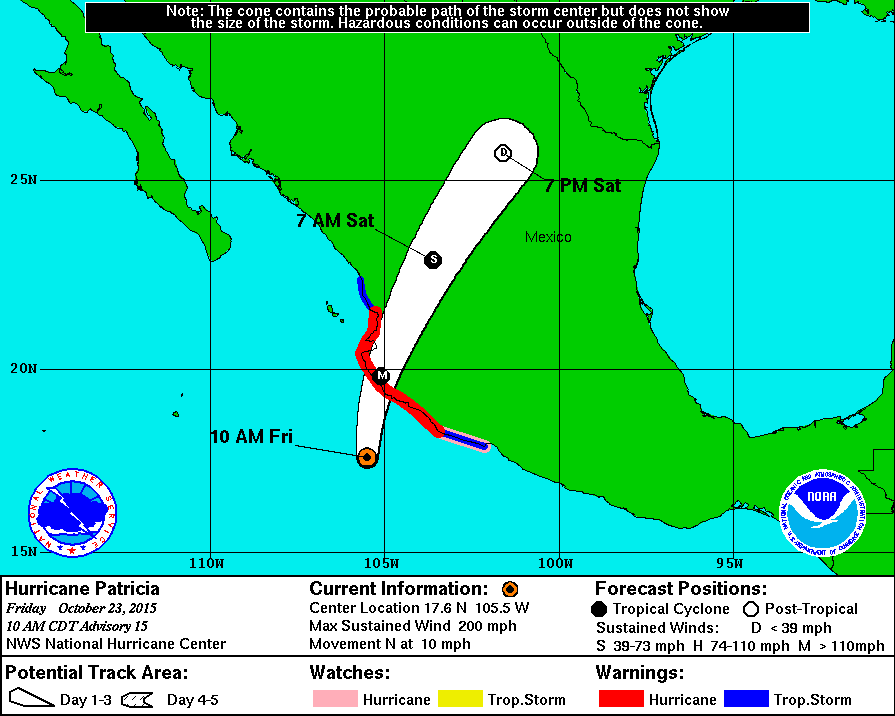This story was originally published by Mother Jones and is reproduced here as part of the Climate Desk collaboration.
The strongest hurricane ever recorded in the Western Hemisphere is barreling toward Mexico’s Pacific coast, where it is expected to make landfall later Friday. According to the National Hurricane Center (NHC), Hurricane Patricia now has maximum sustained wind speeds near 200 miles per hour and even higher wind gusts. That makes it a Category 5 storm — the highest rating on the Saffir-Simpson hurricane scale.
Hurricane warnings are currently in effect for much of the Mexican states of Nayarit, Colima, and Jalisco, including the resort city of Puerto Vallarta, whose metropolitan area is home to 380,000 people. Tens of thousands of people are being evacuated, according to the Vallarta Daily.

National Hurricane Center
Category 5 hurricanes are terrifying. According to the NHC, during a typical storm of this strength, “a high percentage of framed homes will be destroyed, with total roof failure and wall collapse. Fallen trees and power poles will isolate residential areas. Power outages will last for weeks to possibly months. Most of the area will be uninhabitable for weeks or months.” The NHC is predicting that Patricia will make a “catastrophic landfall,” dumping up to 20 inches of rain in some areas, which will likely result in “life-threatening” flash floods and mudslides. There will also be an “extremely dangerous” storm surge that will cause substantial coastal flooding “accompanied by large and destructive waves.”
The remnants of the storm could even help produce heavy rainfall along the Texas coast in a few days.
Hurricane Patricia’s incredible power may be part of a disturbing pattern. As Chris Mooney reported for Climate Desk a couple years ago, a number of the world’s major hurricane basins have set (or have arguably set) new hurricane intensity records since the year 2000.



